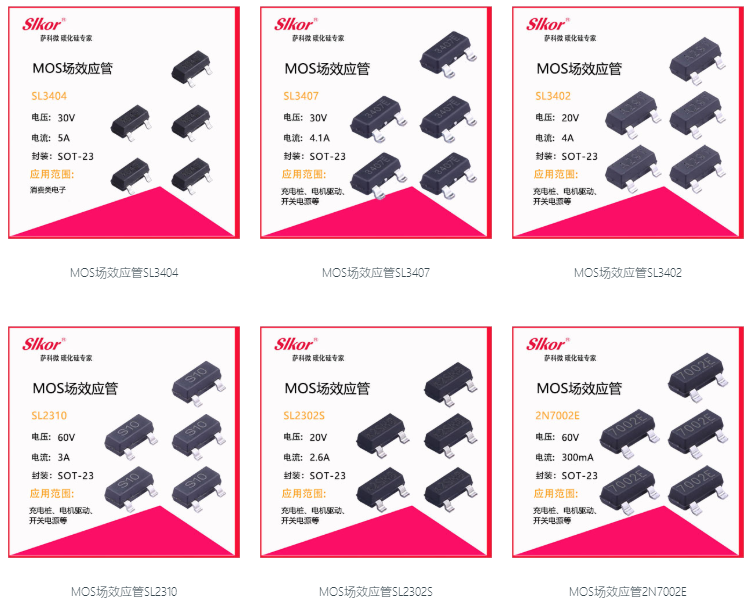Service hotline
+86 0755-83044319
release time:2022-03-17Author source:SlkorBrowse:11325
An analog signal refers to a continuously changing electrical signal. Analog circuit is the basis of electronic circuit, which mainly includes amplifier circuit, signal operation and processing circuit, oscillation circuit, modulation and demodulation circuit and power supply. Below are our common analog circuit questions and answers.

Sacco Micro medium and low voltage MOS tube
1. What is the difference between an active filter and a passive filter?
Answer: Passive filter: This circuit is mainly composed of passive components R, L and C. Active filter: It is composed of integrated operational amplifier and R and C. It has the advantages of no inductance, small size and light weight.
The open-loop voltage gain and input impedance of the integrated operational amplifier are high, and the output resistance is small. After forming an active filter circuit, it also has certain voltage amplification and buffering functions. However, the bandwidth of the integrated operational amplifier is limited, so it is difficult to achieve a high operating frequency of the current active filter circuit.
2. Field effect and transistor comparison
Answer: a. In the occasions where the environmental conditions change greatly, it is more suitable to use FETs.
b. FETs are often used as preamplifiers to improve the input impedance of instruments and reduce noise.
c. The amplification ability of the FET is lower than that of the transistor.
d. The process is simple, the chip area is small, and it is suitable for large-scale integrated circuits. Wider application in pulsed digital circuits.
3. Frequency compensation
Answer: The so-called frequency compensation refers to increasing or decreasing the strength of a signal of a certain frequency to compensate for the weakening or enhancement of the frequency generated in the signal processing process. Commonly used are negative feedback compensation, emitter capacitance compensation, inductance compensation and so on.
4. What other names do PN junctions have?
Answer: space charge region, blocking layer, depletion layer, etc.
5. Is there really no current when the reverse voltage is applied to the PN junction?
Answer: It is not that there is no current at all, the minority carriers generate a very small reverse leakage current under the action of the reverse voltage.









Site Map | 萨科微 | 金航标 | Slkor | Kinghelm
RU | FR | DE | IT | ES | PT | JA | KO | AR | TR | TH | MS | VI | MG | FA | ZH-TW | HR | BG | SD| GD | SN | SM | PS | LB | KY | KU | HAW | CO | AM | UZ | TG | SU | ST | ML | KK | NY | ZU | YO | TE | TA | SO| PA| NE | MN | MI | LA | LO | KM | KN
| JW | IG | HMN | HA | EO | CEB | BS | BN | UR | HT | KA | EU | AZ | HY | YI |MK | IS | BE | CY | GA | SW | SV | AF | FA | TR | TH | MT | HU | GL | ET | NL | DA | CS | FI | EL | HI | NO | PL | RO | CA | TL | IW | LV | ID | LT | SR | SQ | SL | UK
Copyright ©2015-2025 Shenzhen Slkor Micro Semicon Co., Ltd